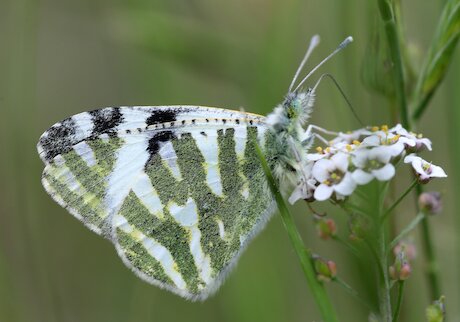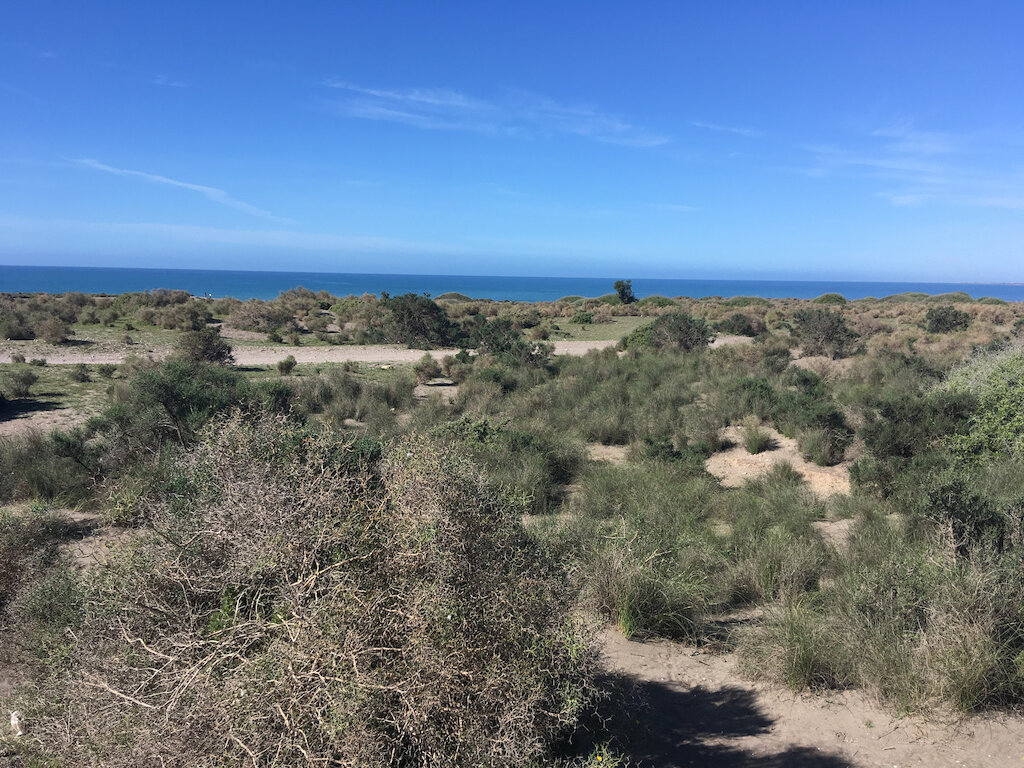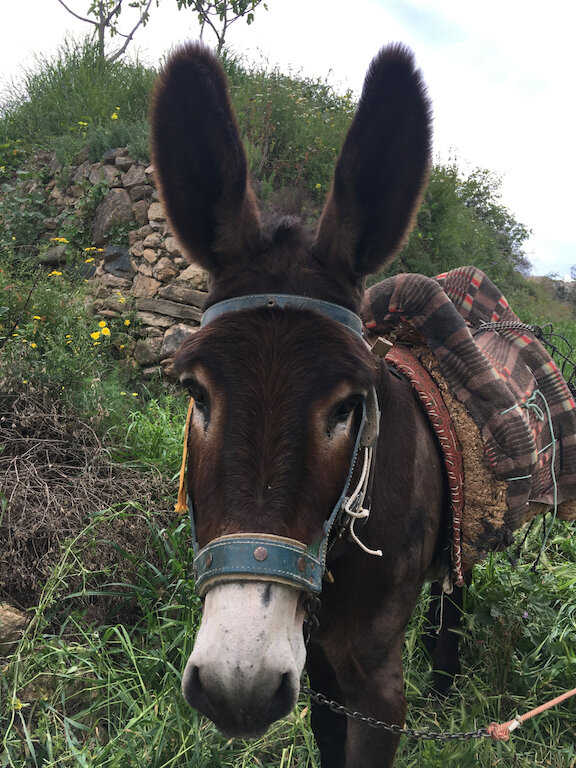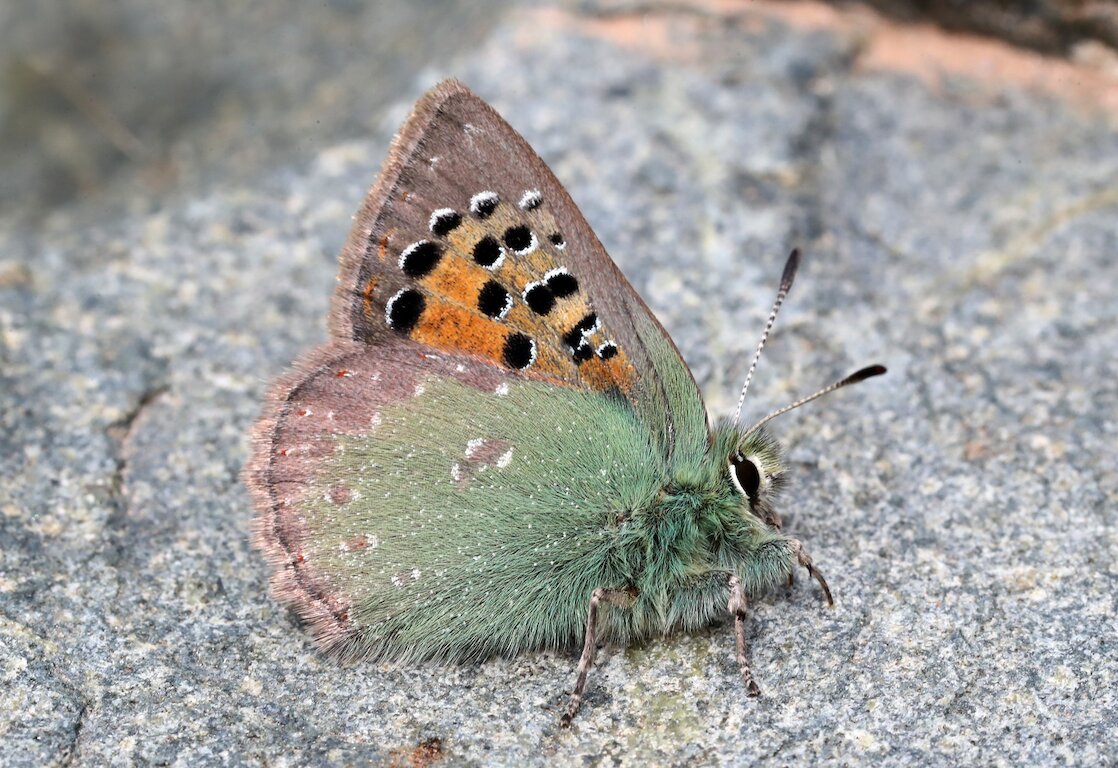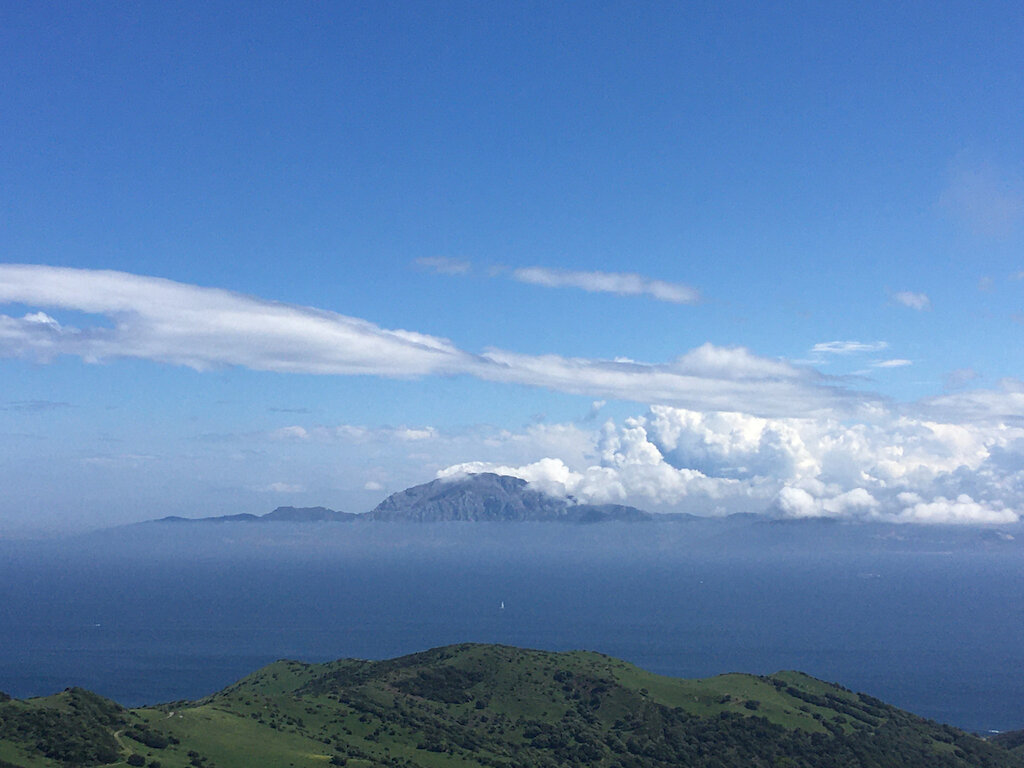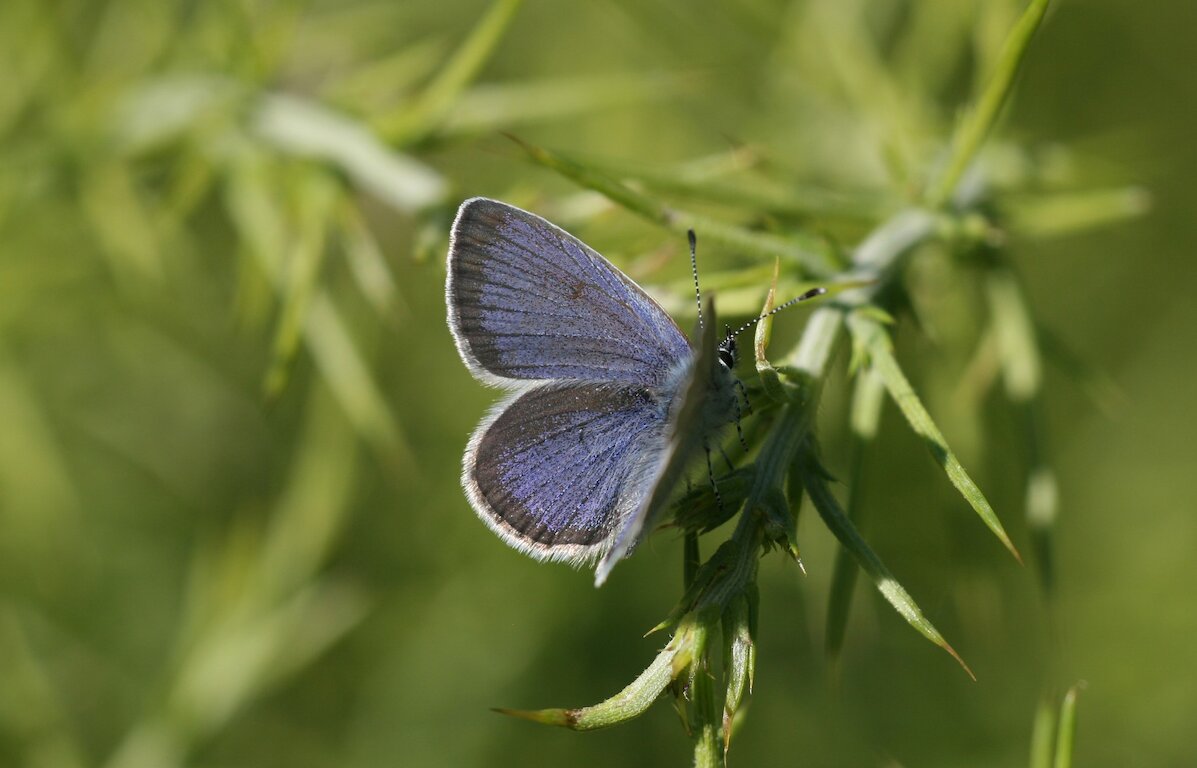Spring comes early to southern Spain and, by the time we spend a week exploring the southern coast and inland areas of Andalusia, a plethora of outstanding butterflies will be on the wing in balmy, sunny conditions over swathes of nectar-rich wildflowers. There’s simply no better time to visit the area.
Our tour starts in the east of Andalucia, based in a small hotel on the outskirts of Almeria, overlooking lagoons upon which flocks of Greater Flamingos Phoenicopterus roseus calmly feed. That exotic tone is only enhanced by the butterflies we’re due to see in the days to come…
Within walking distance of the hotel we’ll start to see our first southern Iberian endemic, Green-striped White Euchloe belemia. Nearby, sheltered coastal valleys will yield abundant Spanish Marbled White Melanargia ines, Spanish Gatekeeper Pyronia bathsheba, and Black-eyed Blue Glaucopsyche melanops. Spanish Marbled White and Black-eyed Blue have a range that extends into northwest Africa – are they European species, or in fact originally from Africa? We’ll certainly be seeing other species during the course of the week that pose the same question, and can’t be readily found anywhere else in Europe but in the extremities of southern Spain. And, as the week progresses, we’ll see North Africa for ourselves, reminding us just how close Andalusia is to the African continent.
Areas of coastal scrub will yield a truly African butterfly species with a toehold in Europe – Common Tiger Blue Tarucus theophrastus is a tiny gem that’s happiest in hot places – it’s even found in the fringes of the Sahara Desert. Happily we won’t have to travel to quite such extremes to see this rare member of the European butterfly fauna…
Some species have made significantly longer journeys to make southern Spain their home. Monarchs Danaus plexippus, were originally a North American species, famous for their immense migration to their wintering grounds in Mexico. Some found their way across the Atlantic Ocean, and colonised the Iberian Peninsula wherever the climate was to their liking, and they found members of the Apocynaceae, their larval foodplant. Within sight of Africa we’ll see these immense, graceful insects for ourselves.
There’s a slim chance we may encounter a late Chapman’s Green Hairstreak Callophrys avis in the course of the week, but we’ll certainly be hoping to share arguably the prettiest European Lycaenid of all with our guests – Provence Hairstreak Tomares ballus, looking like the lovechild of a Small Copper Lycaena phlaeas and a Green Hairstreak Callophrys rubi!
Heading inland for the second half of the week, our base will be in an extremely fine hotel on the outskirts of Antequera. The countryside around here is less arid than down on the coast, and there will be some interesting spring flowers to distract us – notably the extremely scarce Iberian endemic orchid Ophrys algarvensis which grows on an outstanding hillside for orchids a few minutes away from our hotel, alongside Mirror Orchid Ophrys speculum, Woodcock Orchid Ophrys scolopax, Bumblebee Orchid Ophrys bombyliflora, Yellow Bee Orchid Ophrys lutea, Pink Butterfly Orchid Anacamptis papilionacea, and Small-flowered Tongue-orchid Serapias parviflora; and Wild Tulip Tulipa sylvestris.
However, our main attention remains focused on butterflies, for there are some fine targets to look for in the area. We’ll be hoping to find both Aetherie Fritillary Melitaea aetherie, and Spanish Fritillary Euphydryas desfontainii, a jewel-box of blues including Panoptes Blue Pseudophilotes panoptes, and False Baton Blue Pseudophilotes abencerragus, and such colourful spring delights as Spanish Festoon Zerynthia rumina, and Provence Orange Tip Anthocharis euphenoides.
As ever with our tours, the emphasis will be on a relaxed and easy-going pace. The terrain we’ll be exploring won’t be challenging underfoot. The butterflies, however, are guaranteed to sweep you off your feet!
(As this tour runs after our Spring Butterflies of Northern Spain, guests may like to consider joining that tour as well for the ultimate start to their butterfly season…)


